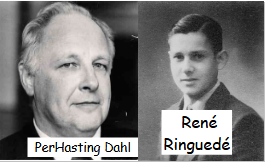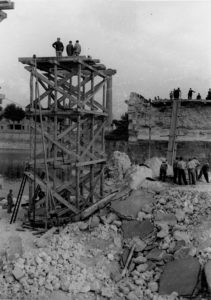National Competition
of
Resistance and Deportation
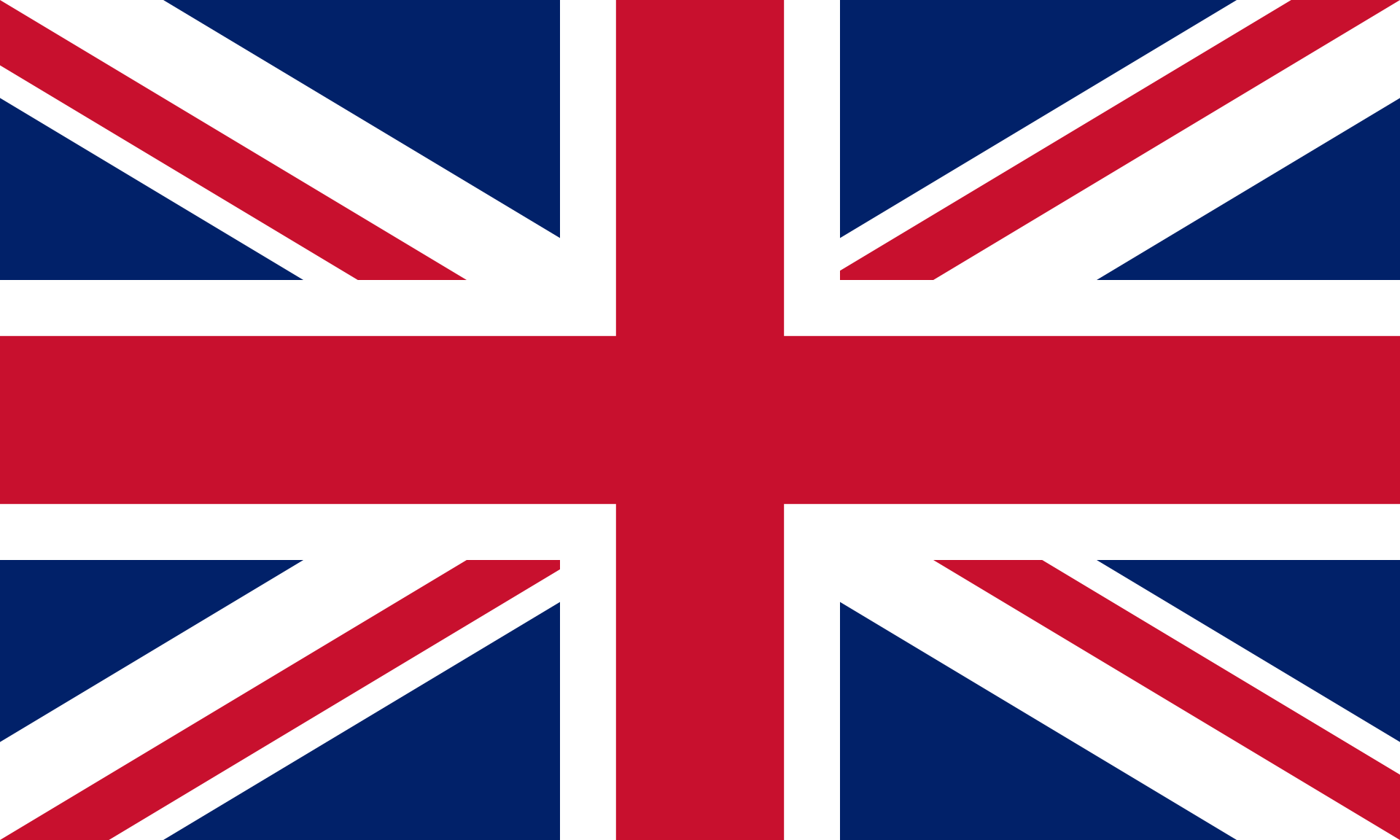
1 Robert Cartier
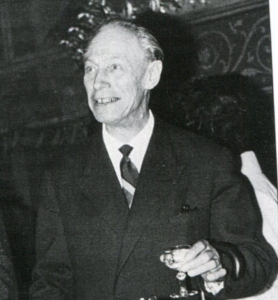 Robert Cartier was born in Selles-Sur-Cher (Loir-et-Cher). He died on August 28th, 1966, in Blois (Loir-et-Cher).
Robert Cartier was born in Selles-Sur-Cher (Loir-et-Cher). He died on August 28th, 1966, in Blois (Loir-et-Cher).
Mobilized in December 1914, he went to the front on May 18th, 1915, and was seriously injured on both feet.
He was a teacher at Augustin Thierry (from 1917-1941) in Blois.
He was retired on February 28th, 1942, by the Vichy government because he was a Franc-maçon ; he was assigned to the Prisoners Aid Society of Blois (departmental mutual assistance) on October 1st, 1943.
The Prisoners Aid Society of Blois : Robert Cartier joined the Departmental Committee for Assistance to Prisoners of War, and became its president in 1943. He ruled the service that was responsible for sending parcels to the prisoners of war, located in the Louis XII wing of the Château de Blois.
During the war, Robert Cartier joined the resistance movement Libé-Nord and became the director of the Departmental Service for Prisoners, Deportees, and Refugees in November 1944. He was acknowleged as a member of the Forces Françaises Libres (Free French Forces).
After the Liberation in 1944 and until 1959, he was elected several times as a municipal councilor and a deputy mayor.
2 Robert Godineau
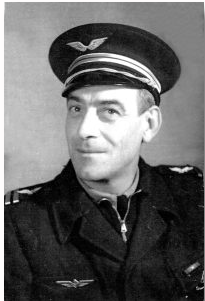 Robert Godineau was born on the 1st of February 1906 in Pontlevoy, in the Loire-et-Cher department. Robert Godineau, also known as Lieutenant Roger, was a member of the FTPF (Francs-Tireurs et Partisans Français) general staff, a resistance movement officially founded in 1942 by the leadership of the French Communist Party. He is best known for leading the group that freed 183 political prisoners from Blois Prison on the 9th of August, 1944.
Robert Godineau was born on the 1st of February 1906 in Pontlevoy, in the Loire-et-Cher department. Robert Godineau, also known as Lieutenant Roger, was a member of the FTPF (Francs-Tireurs et Partisans Français) general staff, a resistance movement officially founded in 1942 by the leadership of the French Communist Party. He is best known for leading the group that freed 183 political prisoners from Blois Prison on the 9th of August, 1944.
3 Marcel Paul
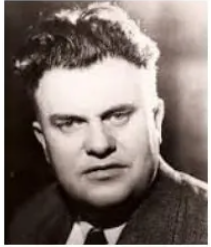 Marcel Paul was a French politician, a trade unionist and a resistance fighter. During the Second World War, from 1940, he took part in the actions of the special organization of the PCF in the Paris region, then in an attempted assassination against Hermann Goering in 1941. He was arrested in November 1941 and he was imprisoned several times, notably in Blois in July 1943. He was deported to Auschwitz then to Buchenwald-Dora. During his deportation, he met Pierre Sudreau (mayor of Blois from 1971 to 1989). After the Liberation, General de Gaulle appointed him Minister of Industrial Production on the 21st of november, 1945. Under his ministry, he was involved in the nationalization of gas and electricity in France and remained until 1966, president of the National Federation CGT of Electricity. Until his death on the 11th of november 1982, he led the National Federation of Deportees, Internees, Resistance Fighters and French Patriots.
Marcel Paul was a French politician, a trade unionist and a resistance fighter. During the Second World War, from 1940, he took part in the actions of the special organization of the PCF in the Paris region, then in an attempted assassination against Hermann Goering in 1941. He was arrested in November 1941 and he was imprisoned several times, notably in Blois in July 1943. He was deported to Auschwitz then to Buchenwald-Dora. During his deportation, he met Pierre Sudreau (mayor of Blois from 1971 to 1989). After the Liberation, General de Gaulle appointed him Minister of Industrial Production on the 21st of november, 1945. Under his ministry, he was involved in the nationalization of gas and electricity in France and remained until 1966, president of the National Federation CGT of Electricity. Until his death on the 11th of november 1982, he led the National Federation of Deportees, Internees, Resistance Fighters and French Patriots.
4 Liberation of Blois detention center
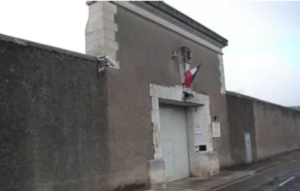 In January 1944, Colonel Fabien Pierre Georges, famous for being responsible for the first deadly attack against a German soldier in Paris, came down from the Capital city to meet with the leaders of the Front National and the FTP in Blois.
In January 1944, Colonel Fabien Pierre Georges, famous for being responsible for the first deadly attack against a German soldier in Paris, came down from the Capital city to meet with the leaders of the Front National and the FTP in Blois.
It aimed at freeing as many political prisoners as possible. Fabien offered to use the Trojan Horse method, which involved infiltrating the prison under Wehrmacht uniforms and taking the facility by force. Unfortunately, this method couldn’t be applied because the prison was filling and emptying very quickly.
At the beginning of August, Colonel Valin de la Vaissière (Departmental leader of the FFI) attempted a negociation with the prison director, who remained loyal to Vichy, but it failed.
Valin agreed to the plan proposed by Robert Godineau, inspired by Colonel Fabien.
The escape was organized by two groups on August 9th 1944 :
Four fake gendarmes and four resistants, under the command of Lieutenant Godineau, were allowed into the prison around 9 PM.
An hour later, a doctor from Muides, carrying a permanent Red Cross pass and plenty of weapons, drove into the prison with four other resistants.
The result of this operation was that 183 prisoners escaped, the telephone lines were cut, and the guards were locked in the cells.
5 Marshal Leclerc
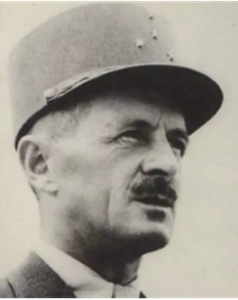 Philippe Leclerc was one of the main military leaders of Free France and a major figure in the liberation of France.
Philippe Leclerc was one of the main military leaders of Free France and a major figure in the liberation of France.
Taken prisoner in 1940, he escaped from the Germans and managed to join General de Gaulle in England on the 22nd of July. At the head of the 2nd Armored Division, he took part into the Normandy landings and the Americans let him enter Paris on the 24th of August 1944. He then liberated Strasbourg on the 23rd of November that same year. After the war, he was Commander of the French Forces in Indochina in 1945. He died in a plane crash on the 28th of November 1947. He was posthumously named Marshal in 1952.
6 René Calenge
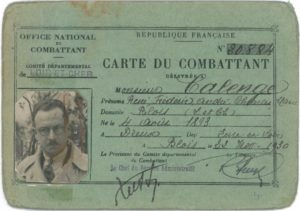 Mayor of Blois from 1947 to 1959, René Calenge was born in Dreux on the 4th of August, 1893. He settled as a solicitor in Blois in 1923. A veteran of the 14-18 war, he was rewarded the Croix de Guerre and the Legion of Honor. By prefectural decree of the 2nd of April, 1941, René Calenge became the first deputy in the municipality chaired by Henri Drussy. After the latter’s arrest by the Germans, René Calenge held the position of mayor from the 24th of may to the 21th of August, 1944. A member of the municipal council in May 1945, he was elected mayor after the elections of October 1947. During this mandate, René Calenge continued and completed the reconstruction of downtown Blois. He also chaired the Henri Drussy Federation of War Victims and Veterans for many years.
Mayor of Blois from 1947 to 1959, René Calenge was born in Dreux on the 4th of August, 1893. He settled as a solicitor in Blois in 1923. A veteran of the 14-18 war, he was rewarded the Croix de Guerre and the Legion of Honor. By prefectural decree of the 2nd of April, 1941, René Calenge became the first deputy in the municipality chaired by Henri Drussy. After the latter’s arrest by the Germans, René Calenge held the position of mayor from the 24th of may to the 21th of August, 1944. A member of the municipal council in May 1945, he was elected mayor after the elections of October 1947. During this mandate, René Calenge continued and completed the reconstruction of downtown Blois. He also chaired the Henri Drussy Federation of War Victims and Veterans for many years.
7 War memorial of Blois
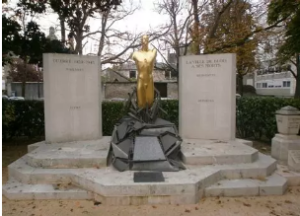 The war memorial of Blois for 1939-1945 is the work of sculptor Paul Balme and of architect Coutes. The materials used are limestone and bronze. It is a stele, located near the memorial for World War I (1914-1918). It also honors the fall of the Indochina War (1946-1954), the Algerian War (1954-1962), and other overseas military operations.
The war memorial of Blois for 1939-1945 is the work of sculptor Paul Balme and of architect Coutes. The materials used are limestone and bronze. It is a stele, located near the memorial for World War I (1914-1918). It also honors the fall of the Indochina War (1946-1954), the Algerian War (1954-1962), and other overseas military operations.
8 Town hall
He was a Norwegian politician, resistance activist, member of the Norwegian Parliament and its President from 1981 to 1985. He was also an aviator during World War II. Per Hysing Dahl, as a pilot in the RAF, carried out several reconnaissance flights, using landmarks seen from the sky such as the bell tower of Blois Cathedral. These missions earned him a few years after the end of the conflict the title of Honorary Citizen of the City of Blois and the opportunity to attend the inauguration of its commemorative plaque in 1984.
René Ringuedé was born on the 6th of March, 1924 in Loury, in the Loiret. He was a committed young man and he joined the French resistance during the Second World War, integrating the French Forces of the Interior (FFI) and the Francs-Tireurs et Partisans (FTP).
Commitment : He was involved in resistance activities, notably by collecting weapons and medicines for his wounded comrades.
Death : René Ringuedé was shot on August 17th. 1944, in Blois, while he was taking part in the liberation of the city. A German bullet severed his carotid artery in the Jardin de l’Evêché. He was only 20 years old at the time of his death.
Burial : He was buried in the FFI resistance plot in the Blois cemetery.
Recognition : René Ringuedé was acknowleged as Mort pour la France and was promoted to the order of the Nation. He received the Croix de Guerre.
Commemorative plaques : His name is carved into a plaque at Blois town hall, the town’s 1939-1945 memorial, and the Loury war memorial.
Commemorations:
A tribute was paid to him on September 2nd, 2018 during the commemoration of the 74th anniversary of the liberation of Blois, in the presence of his family. High schoolers read texts about his career, highlighting his role in the resistance.
René Ringuedé is a symbol of the fight for freedom and resistance against the Nazis.
9 Shaved women at war Bourg Saint Jean Street
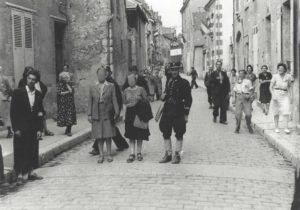 At the beginning of the liberation of France, hair shaving was a form of violence suffered by women who had relations with Germans. Some French resistance fighters then shaved the hair of these women because it represented femininity.
At the beginning of the liberation of France, hair shaving was a form of violence suffered by women who had relations with Germans. Some French resistance fighters then shaved the hair of these women because it represented femininity.
This photo was taken in « old Blois », more precisely in Bourg Saint-Jean Street. A photographer had two women with shaved heads pose with the agreement of their escorts, that is to say the FFI (French Forces of the Interior), resistance fighters and gendarmes. Several women, children, and men accompany the procession with amused and nosey looks. Some of them express satisfaction, but neither anger nor contempt. There was no leniency toward these women, but no resentment either. Expressions ranged from smiles to reserve. But this was not the only violence that the population that sympathized with the Germans suffered from. Indeed, several German bookstores were ransacked and books were burned. For example, in Blois, a bookstore next to the Denis Papin stairs was burned down.
10 Marshal de Lattre de Tassigny
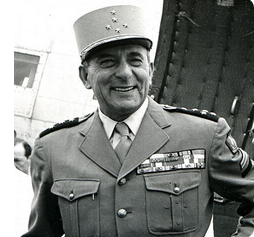 After a brilliant career, he was appointed General in 1939 and Chief of staff at the mobilization. Commander of the 1st French Army, he successfully liberated Toulon, Marseille, Lyon, Dijon, reconquered Belfort and Alsace and led his troops to the Danube (1944-1945). Initially Commander-in-chief of NATO land forces, he was then appointed, in 1950, High Commissioner and Commander-in-Chief in Indochina. He died in 1952 and was posthumously elevated to the dignity of Marshal of France.
After a brilliant career, he was appointed General in 1939 and Chief of staff at the mobilization. Commander of the 1st French Army, he successfully liberated Toulon, Marseille, Lyon, Dijon, reconquered Belfort and Alsace and led his troops to the Danube (1944-1945). Initially Commander-in-chief of NATO land forces, he was then appointed, in 1950, High Commissioner and Commander-in-Chief in Indochina. He died in 1952 and was posthumously elevated to the dignity of Marshal of France.
11 Henry Drussy
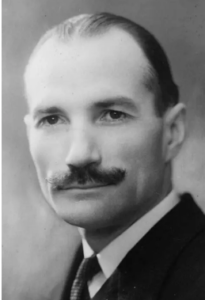 Among the numerous mayors in Blois, a name stands out, that of Henri Drussy.
Among the numerous mayors in Blois, a name stands out, that of Henri Drussy.
Born in Veuves, near Onzain, in 1893, Henry Drussy was a former fighter, during World War I, and was badly injured. He was appointed Mayor in Blois in 1941, after the death of his predecessor, Emile Laurens, during the bombings of the city by the German army.
Privileged interlocutor of the German occupier, he tried relentlessly to protect his fellow citizen. He took care of the refugees and of the rehousing of war-related homeless people. As a member of the resistance, he was arrested twice by the Germans.
He died on the 24th October 1944.
12 Reconstruction and refoundation of France
The city of Blois was destroyed in the summer of 1940. The flying German aircrafts bombed the city from the 15th to the 17th June 1940. The fire triggered by the bombings, destroyed more than 200 blocks of flats and damaged more than 1300 buildings, mainly located in the lower part of the city between the castle and the Loire river. Thousands of homeless inhabitants were sheltered in wooden huts. 230 deaths were officially recorded.
In the Autumn 1940, the Mayor Henry Drussy requested that Charles Henry Nicod started the rebuilding of the city. This Parisian architect believed in the Athens Charter principles whose aim was to protect the architectural heritage.
The building excavations started as early as 1946 but the rebuilding of the town centre housing only ended in 1948. The whitewash extracted from the Loire river covered the new materials on the front of the houses. The roofs were made of wood and covered with traditional slate. The Allées Camp used for German prisoners from 1944 to 1947 served to rehouse the families who had lost their home in the town center.
The Resistance roundabout is a symbol of this architectural policy in Blois. It opens onto widened quays to accommodate the growing traffic.
Refoundation of France
In November 1944, Louis Keller was appointed Prefect of Loir et Cher by General de Gaulle. His goal was to re-establish the authority of the central government as quickly as possible to avoid excess and revenge during the extrajudicial purge and to quickly disarm the resistance fighters. His main challenge was to deal with the different tendencies of the Resistance. This led him to untenable situations that pushed him to leave his position at the end of December 1944. On October 21st, 1945, the first legislative elections since 1936 took place. Women, having obtained the right to vote since April 1944, participated in this election. Loir et Cher elected 4 deputies: Robert Mauger for the SFIO, Bernard Paumier for the Communist Party, Gabriel Chevallier for the Popular Republican Movement and Robert Bruyneel for the Democratic Alliance.
13 Henri Valin de la Vaissière
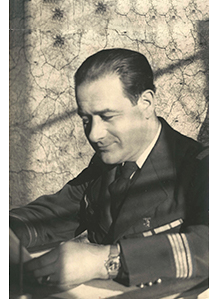 Henri de la Vaissière was born in Saumur on the 14th of December 1901. From June to October 1925, he took part in the Rif War, on the borders of Spanish and French Morocco. At the end of the conflict in May 1926, he received his first military distinctions for his bravery and the quality of the missions entrusted to him.
Henri de la Vaissière was born in Saumur on the 14th of December 1901. From June to October 1925, he took part in the Rif War, on the borders of Spanish and French Morocco. At the end of the conflict in May 1926, he received his first military distinctions for his bravery and the quality of the missions entrusted to him.
After the armistice of the 22nd of june 1940, he joined the French Resistance and adopted the pseudonym VALIN. On the 1rst February 1944, he was appointed commander of the O.R.A. (Resistance Organization of the Army) for Loir-et-Cher and commander of the F.F.I. (French Forces of the Interior). He divided the department into six sectors and placed an officer from the O.R.A. at the head of each one, including Captain Judes for the Blois sector.
The widow of the colonel recalls some memories of her husband’s daily life: « In this house in Sologne, there were mysterious comings and goings of gentlemen on bicycles, claiming to be from the Rural Engineering or the Public Works Department… Some were young, others older, some thin, some plump, all arriving out of breath! The Blue Room often had occupants ! There were long, mysterious conversations in the living room… The daily thought of an omnipresent danger, the relieved awakenings that it was not that night that the visit of the Germans had happened… Other comings and goings, very different, were those of people who needed something, those who came to get medical assistance. The Colonel, from Blois, sent little notes thanks to the liaison agents, looking for a shelter for the night… Life went on, with long evenings lit by poor tallow candles, everyone gathered around the small British radio set that had been parachuted in, sharing common anxieties and hopes, a sense of brotherhood and mutual understanding that was so good… »
As the end of the Nazi occupation drew nearer, increasingly bold actions were carried out, culminating in the commando operation that freed 183 political prisoners held in the Blois prison on the 10th of August 1944. These actions led to the complete liberation of Loir-et-Cher (on the 11th of August in Vendôme and on the 16th of August in Blois – right bank).
He died on December 19th, 1944, assassinated by a former non-commissioned officer who had been a resistance fighter.
14 Square of Resistance
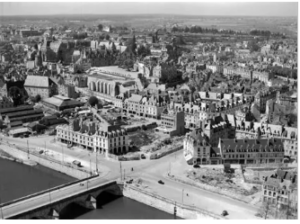 The Square of Resistance is located at the junction of the Jacques Gabriel Bridge, Maréchal de Lattre-de-Tassigny Street, Drussy Street, and Denis Papin Street.
The Square of Resistance is located at the junction of the Jacques Gabriel Bridge, Maréchal de Lattre-de-Tassigny Street, Drussy Street, and Denis Papin Street.
The square was liberated on the 16th of August 1944, when the Germans were pushed back across the bridge to the Vienne quarter.
It has been named « Place de la Résistance » since the 9th of November, 1949.
Resistance movements began at the end of 1940.
In Loir-et-Cher, the two main movements were organized into « Libération Nord » and « Le Front National. »
After the Normandy landings on the 6th of June,1944, all the components of the resistance united under the name F.F.I. (French Forces of the Interior) and were supported by the Front National and the Organization of the Resistance in the Army (O.R.A). The F.F.I. of Loir-et-Cher then engaged in a fight when the weapons and supplies were parachuted, under the command of Colonel Valin de la Vaissière. They mounted sabotage, ambushes, and attacks. The resistance fighters were arrested, tortured, executed or deported. About 190 people died in deportation camps or under torture, and more than 200 were shot.
15 The Jacques Gabriel Bridge
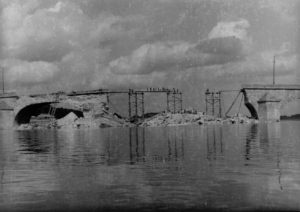 Keep in mind that in 1940, the second arch was destroyed by the French to slow down the German army’s invasion. After the Normandy landings (on June 6th, 1944), a second bombing, this time by the Americans, took place on June 27th, 1944. A lot of bombs and bombshells fell into the Loire, but most notably, all the housing along the Saint-Jean and Abbé Grégoire quays were destroyed.
Keep in mind that in 1940, the second arch was destroyed by the French to slow down the German army’s invasion. After the Normandy landings (on June 6th, 1944), a second bombing, this time by the Americans, took place on June 27th, 1944. A lot of bombs and bombshells fell into the Loire, but most notably, all the housing along the Saint-Jean and Abbé Grégoire quays were destroyed.
Concerning the Jacques-Gabriel Bridge, the damage increased during the liberation with the destruction of the three central arches mined by the Germans during their retreat.Ten months of work were needed to rebuild the bridge, and then, on September 2nd, 1945, a wooden bridge was opened to traffic while the work continued, until 1948.
16 Henri Rol Tanguy
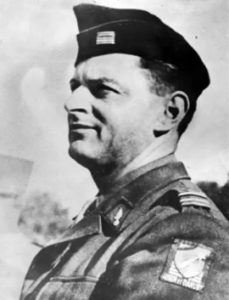 Henri Tanguy, known as « Colonel Rol-Tanguy », was born on June 12th 1908 and died on September 8th 2002 in Ivry-sur-Seine.
Henri Tanguy, known as « Colonel Rol-Tanguy », was born on June 12th 1908 and died on September 8th 2002 in Ivry-sur-Seine.
On October 5th 1940, as he heard that communist activists were being arrested, he became a resistant. He took part in the establishment of the Organisation Spéciale (OS). The communist party entrusted him with the responsibility for the southern sector of Paris and its surroundings where he planned sabotage against the German forces. In August 1941, he organized, in Paris and around the city, the deployment of groups of men with weapons. They became part of Francs-Tireurs et Partisans (FTP) and of the communist armed resistance movement in February 1942. In May 1943, he wrote with his wife, Cécile, the underground newspaper « Le Franc-tireur parisien ». In September 1943, he took the name of Rol, from the international brigades member, Théo Rol, killed in 1938 during the Battle of Ebre. In 1944, he dedicated himself to the liberation of Paris.
A square was named after him in Blois in September 2008.
16 Crossroads of liberation
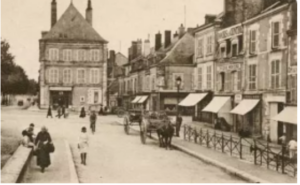 Rebuilt after the bombings of 1940 and 1944, this strategic entrance to the Faubourg de Vienne, located at the intersection of the Jacques-Gabriel Bridge and President Wilson Avenue, was marked by World War II.
Rebuilt after the bombings of 1940 and 1944, this strategic entrance to the Faubourg de Vienne, located at the intersection of the Jacques-Gabriel Bridge and President Wilson Avenue, was marked by World War II.
The Liberation Square owes its name to the events of August 16, 1944.
On that day, the Germans believed they would be safer on the left bank of the Loire. They decided to evacuate the city center.
Around 4:00 PM, they destroyed the artillery positioned on Châteaudun Avenue and blew up the telephone and telegraph center near the Prefecture. The order was then given to all F.F.I.-F.T.P. resistance groups to march on the city. They pushed the Germans back, reclaiming strategic points up to the Jacques-Gabriel Bridge.
At 6:30 PM, a group of resistance fighters led by Lieutenant Blaye reached the Feldkommandantur (the Grand Hôtel), which the Germans had abandoned.
The French hoisted the tricolor flag, replacing the swastika flag.
At 7:00 PM, there were no more Germans on the right bank.
At 7:20 PM, the Germans explode the three central arches of the Jacques-Gabriel Bridge and covered the city center with heavy shots, causing military and civilian losses until August 31, 1944.
18 Allies street
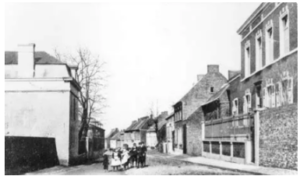 The Allies refered to as the powers fighting against Nazi Germany during the Second World War, that is to say the United States, the United Kingdom and the USSR, who were the victors of this war.
The Allies refered to as the powers fighting against Nazi Germany during the Second World War, that is to say the United States, the United Kingdom and the USSR, who were the victors of this war.
The British and American Allies played a vital role in the liberation of Blois and its surrounding area. Their actions were both aerial and land-based.
From an air perspective, Blois was within the air operations zone defined by the Allies.
American and British aircrafts were primarily used to neutralize, destroy and/or harass German ground and air forces and their supplies. This included, among other things, the destruction of railway lines and bridges. On June 14th, 1944, the Jacques Gabriel Bridge was bombed for the first time but the target missed, causing the death of 27 civilians on Avenue Wilson. 2 new attacks failed on June 21st and 27th, 1944. On August 6th of the same year, Blois train station was also bombed. Blois also served as a landmark during night flights for Allied airmen, guided by the Saint Louis Cathedral and its proximity to the Loire river. These missions consisted of dropping off resistance fighters in the occupied zone or exfiltrating them.
During the first weeks of August 1944, and in parallel with the work of the aviation, American ground units approached Blois by the Herbault road. Having considered that the German defenses were of little importance and in order to avoid military losses, the American commander decided to return to Vendôme, leaving the liberation of Blois to the Resistance.
18 1st september street
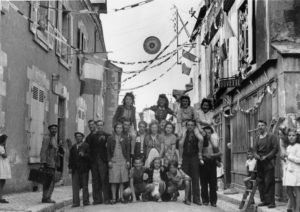 Premier Septembre Street owes its name to the day of the liberation of the city of Blois. After the liberation of the right bank of the Loire river on the 16th August 1944, the Germans left the town center to withdraw South of the Loire river, in the Vienne quarter. During several days, the inhabitants lived in the fear of being killed until the occupying troops retreated completely during the night from the 31st August to the 1st September 1944.
Premier Septembre Street owes its name to the day of the liberation of the city of Blois. After the liberation of the right bank of the Loire river on the 16th August 1944, the Germans left the town center to withdraw South of the Loire river, in the Vienne quarter. During several days, the inhabitants lived in the fear of being killed until the occupying troops retreated completely during the night from the 31st August to the 1st September 1944.
20 Charles Ruche
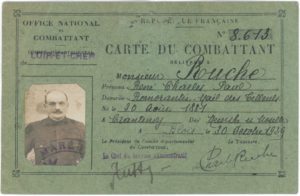 Teacher, Mayor of Blois from September 1944 to September 1947, Charles Ruche was a member of the resistance, which led to his being arrested by the Gestapo and held in custody for 7 months. In August 1944, he was appointed mayor by the Gaullist prefect Keller after the Liberation Departmental Committee agreement. He kept his position after the elections in May 1945. This mandate was marked by the reconstruction of the disaster-stricken districts, the extension of the water factory, the Cabochon housing estate, the transfer of Augustin Thierry school to the Lunier Villa (a former outbuilding of the Departmental Psychiatric Hospital), the purchase of the former Dessaigne old people’s home to create a school for young girls. During the townhall elections in 1947, he had to resign from his mayor position for the benefits of René Calenge.
Teacher, Mayor of Blois from September 1944 to September 1947, Charles Ruche was a member of the resistance, which led to his being arrested by the Gestapo and held in custody for 7 months. In August 1944, he was appointed mayor by the Gaullist prefect Keller after the Liberation Departmental Committee agreement. He kept his position after the elections in May 1945. This mandate was marked by the reconstruction of the disaster-stricken districts, the extension of the water factory, the Cabochon housing estate, the transfer of Augustin Thierry school to the Lunier Villa (a former outbuilding of the Departmental Psychiatric Hospital), the purchase of the former Dessaigne old people’s home to create a school for young girls. During the townhall elections in 1947, he had to resign from his mayor position for the benefits of René Calenge.

